Why home-grown lemon doesn't bloom and what to do to fix it
The lemon tree is often grown at home. The plant is relatively unpretentious in care and the ability to bloom and bear fruit even in a pot. Lemon looks even more impressive during flowering than during fruiting - it is covered with many delicate white flowers with a delicate aroma. After flowering, ovaries and bright fruits appear.
If the lemon does not bloom, then the citrus grower made mistakes in the care. This process is influenced by various factors. Knowing about them, even a beginner can achieve the desired effect. Read on to learn what to do if the lemon does not bloom.
The content of the article
Why lemon does not bloom at home
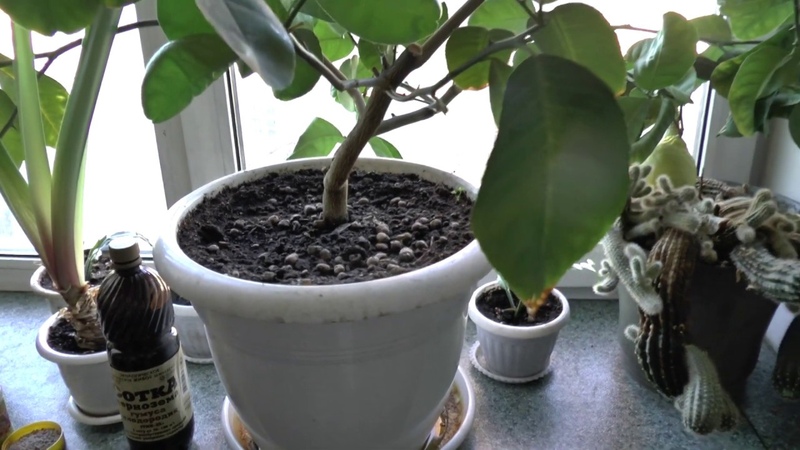
The first flowering of a lemon, subject to proper care, is observed 3-7 years after planting, depending on the variety. At this time, several inflorescences are formed on the plant. Further, their number increases. If the plant is comfortable, it will bloom every year throughout its life.
Note! If the lemon blooms 1 or 2 years after planting, the inflorescences will have to be cut off. Otherwise, false flowering will take away all the strength of the plant, and again it will not bloom soon.
If the lemon does not bloom, then the rules of care have been violated. Also, a similar problem often arises if the tree is still too young. Some varieties bloom only 7-10 years after planting.
Why lemon does not bloom:
- Improper watering. If you water the lemon with water at a lower temperature than indoors, the tree will start to ache, and the inflorescences will not appear. With insufficient watering, the plant does not form or sheds inflorescences so that the last moisture does not go to them. With an excess and stagnation of moisture, the root system rots and can no longer absorb liquid, which also contributes to the dropping of inflorescences.
- Uncomfortable temperature. Lemon does not bloom at temperatures below + 15 ° C. At the same time, it sheds its inflorescences at temperatures above + 30 ° C. The problem also arises if the tree is standing in a draft or exposed to sudden changes in temperature.
- Lack of wintering. Under natural conditions, in winter, the lemon is at rest, at which time it is restored and gains strength for the next growing season. If at home he is not provided with optimal conditions and a lower temperature, by spring the tree will be exhausted.
- Lack of fertilizer. Lemon is picky about the composition of the soil. The potted plant lacks nutrients from the soil. If you do not make feeding, the tree will not have the strength to form inflorescences. The problem also arises when an excessive amount of nitrogen is applied, when all plant resources are used to build up green mass.
- Lack of lighting. It is important to provide the tree with 12 hours of daylight. With a lack of lighting, it can grow, but it will not throw out inflorescences. When exposed to direct sunlight, burns will appear on the leaves, the tree will begin to fade.
- Incorrect formation... Often, among novice gardeners, the lemon tree does not branch, but grows in the form of one curved trunk with 2-3 shoots. Inflorescences are formed only on branches of the 4th-6th order. This is because, without pinching at home, new shoots are formed extremely slowly. With an excessive number of shoots, all the forces of the tree go to the formation of green mass, and not inflorescences.
- Growing from seeds. In this case, the first flowering will have to wait not after 3-4 years (as with vegetative propagation), but after 5-10 years.
- Planting in the wrong pot... If you plant a lemon right away in a container that is too large, it will not develop properly and will not bloom.
- Lack of transfers. When transplanting, the soil is renewed (salts accumulate in the old, which impede the absorption of nutrients) and a pot of a suitable size is selected. In a cramped container and poor soil, it will not be possible to make the lemon bloom.
- Diseases and pests. This is one of the most common reasons a lemon refuses to bloom. Typically, this symptom is caused by infection with fungal diseases, aphids, spider mites and thrips.
What to do and how to make lemon bloom
In order for a lemon to bloom, it is important to get rid of all the factors that prevent it and provide proper care. Most often, it is useful to use a number of tricks in combination.
Temperature and lighting
During the growing season, lemon should be in a temperature range of +18 to + 26 ° C. The optimal indicator is + 20… + 22 ° C.
The plant does not tolerate sudden changes in temperature. For example, if you take it outside in the summer without preliminary hardening, it will start to hurt and will not bloom. Therefore, before you take the tree out into the street, bring it into the house or remove it for the winter, it is tempered. First, they are brought into new conditions for 30 minutes, the next day, the duration of stay is doubled. Gradually, this time is brought to a day. Only after that the lemon is left in the new place for good.
Drafts are also harmful to the plant. Therefore, you should not open the window if the weather is cool outside.
Note! In summer, lemon thrives on a glazed veranda.
Citrus needs 12 hours of daylight. In this case, the lighting should be intense. It is best to plant on a southern, southwestern or southeastern windowsill. It is not recommended to place it near the north window.
At the same time, the tree does not tolerate direct sunlight. To provide him with comfortable conditions from 12:00 to 16:00, the window is covered with a translucent curtain.
Watering and humidity
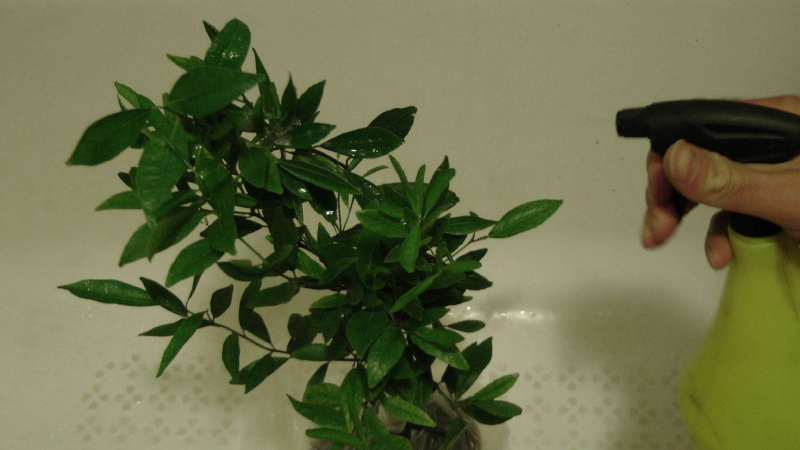
High-quality watering is the key to proper lemon growth... In order for the tree to bloom and bear fruit, it is important to follow the basic rules for moistening the soil:
- In the hot season, the tree is watered daily. When it's warm outside, but not hot, they do it every other day.
- After each watering, the soil is loosened to break up the earthen crust, which interferes with normal air exchange in the roots and promotes fluid retention.
- For irrigation, use settled water at room temperature.
- To prevent water from stagnating, the pot must have drainage and special holes.
- The soil is moistened early in the morning or after sunset.
The water is defended not only to warm it up to room temperature, but also to remove chlorine. This substance causes iron deficiency and chlorosis, which is also fraught with a lack of flowering.
Experienced gardeners prefer bottom watering, which allows the plant to receive the required amount of moisture. To do this, water is not poured into a pot, but into a tray under it.
For a lemon to bloom, just watering is not enough. The plant is sprayed daily, and on hot days - in the morning and evening. For spraying use water at room temperature.
Note! Spraying the stalks with warm water accelerates the ripening of the fruit.
Shaping and pruning
Lemon does not bloom without proper shaping. Only the trunk and branches of the first order grow independently at home, and the shoots on which inflorescences are formed are not formed.
To make the desired shoots grow, pruning is carried out:
- The main trunk is pinched when it reaches 15-35 cm (depending on the desired tree height). The cut site is treated with garden pitch.
- The branches of the first, second and third order are pinched when they reach a length of 10-20 cm. Each of them should have at least 3 buds.Leave 3-4 shoots of each order, choosing the strongest and healthiest of them.
- The branches of the 4th-6th order are not pinched. Inflorescences are formed on them, the bulk of which is located at the ends.
Pinching stimulates the formation of new shoots. Without this procedure, branches of the required order are often simply not formed.
All cuts must be lubricated with garden varnish. Crops are suitable for breeding citrus by cutting method.
Every year before or after the growing season, sanitary pruning is carried out. Remove dry, weak and damaged branches.
Transfer
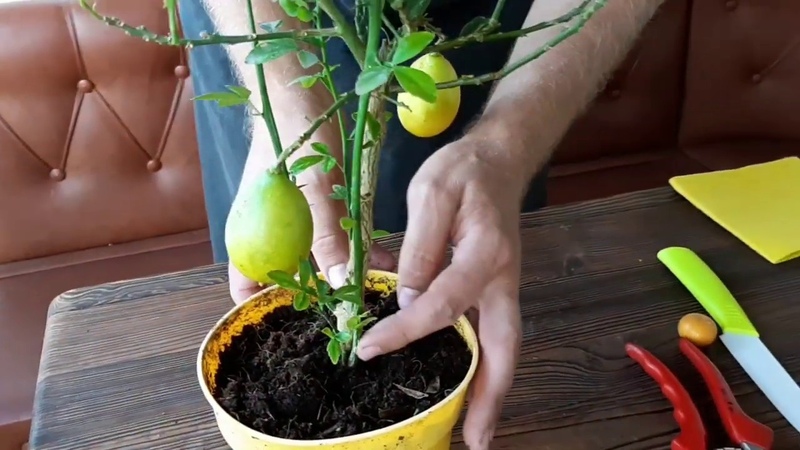
For the first 3 years, the lemon is transplanted annually by the transshipment method. The plant is taken out of the pot along with a lump of earth and simply rearranged into a container that is 2-3 cm larger than the previous one. Only the old drain is removed. The missing volume is filled with new soil. For transplanting, use a special soil mixture for citrus fruits or a mixture of garden soil, humus and sand. The soil must be disinfected.
Then the tree is replanted once every 2-3 years. It is taken out of the pot and at least 2/3 of the old earth is removed. Along the way, decaying and dried roots are cut off. Drainage and soil are poured into a new pot. The plant is transplanted by gently straightening the root system.
After transplanting for at least 2 weeks, the lemon is kept in a shaded place. Limiting watering is recommended.
Clay containers are best suited. They allow air to pass through and prevent root rot.
Note! If the lemon has stopped blooming, replanting will often solve the problem.
Top dressing

In order for the citrus tree to bloom and bear fruit, use top dressing. Stores sell special fertilizers for citrus fruits that contain all the necessary elements, but many citrus growers prepare the nutritional formulations themselves.
The basis of mineral dressing for lemon is phosphorus and potassium. Also urea and ferrous sulfate are needed. To a lesser extent, wood requires magnesium, calcium, zinc, manganese and copper.
All necessary items are sold separately in gardening stores. They are simply mixed in the right proportions, after which they are laid in the ground or diluted with water.
The tree also needs organic fertilizers. Usually biohumus, manure or humus are used.
All the necessary trace elements are found in the products used in folk remedies. The list contains three fertilizer options that you can feed the lemon to bloom:
- Fish broth. 300 g of fish or fish waste is boiled for half an hour in 1 liter of water. The broth is filtered and, after cooling, is used for watering lemons.
- Potassium permanganate. The tree is periodically watered with a light pink solution of potassium permanganate.
- Tea. 1 tbsp is poured into the pan. l. black tea, 2 banana skins and 1 tbsp. l. nettles. The mixture is boiled for 15 minutes. and let it brew for a day. Then it is filtered and used for watering.
Fertilizers are applied once every 1-2 weeks. This is done in the morning or evening when the sun is inactive. The plant must be watered first.
Wintering
It is advisable to make the citrus rest every winter. During this time, he will have time to recover, and in the spring he will actively throw out new shoots and bloom.
To provide the lemon with optimal wintering conditions, it is taken out into a draft-free room with a temperature of + 5 ... + 10 ° C. With such indicators, additional lighting and feeding are not required. It is enough to water the plant 1-2 times a week.
If it is not possible to place a tree in a room with a low temperature, it is important to provide it with optimal conditions for growth in winter. To compensate for the lack of light, 2 phytolamps are installed opposite the plant at a distance of 20 cm. They are turned on for 5-6 hours a day.
In this case, the soil is watered as it dries, and fertilizing is applied once a month. A humidifier or containers of water are placed near the pot.
Graft
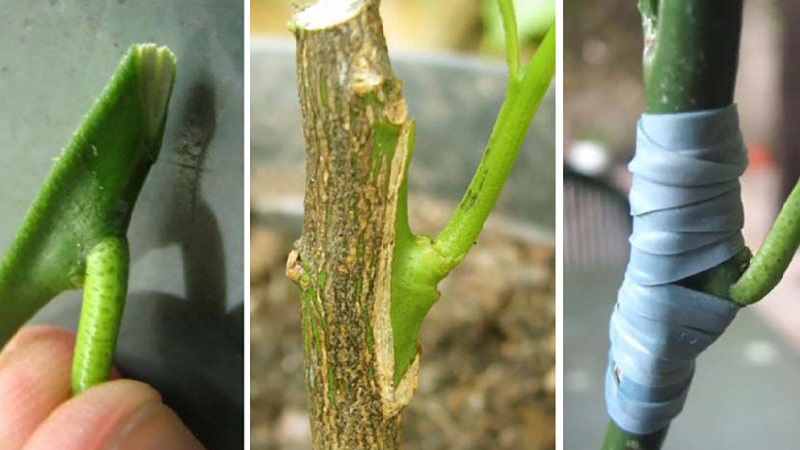
If, despite proper care, citrus still does not bloom, it will help to correct the situation. graft... Usually, this procedure is carried out with plants grown from seed, but sometimes it is effective with varietal lemons.
The mother tree should already bloom and carry, be absolutely healthy. To obtain a scion, a one-year-old branch with a semi-lignified but flexible bark is chosen.
The entire stem of the plant (if the seedling is not more than 2 years old) and one of its branches are used as a stock. The stock must also be strong and completely healthy.
Diseases and pests
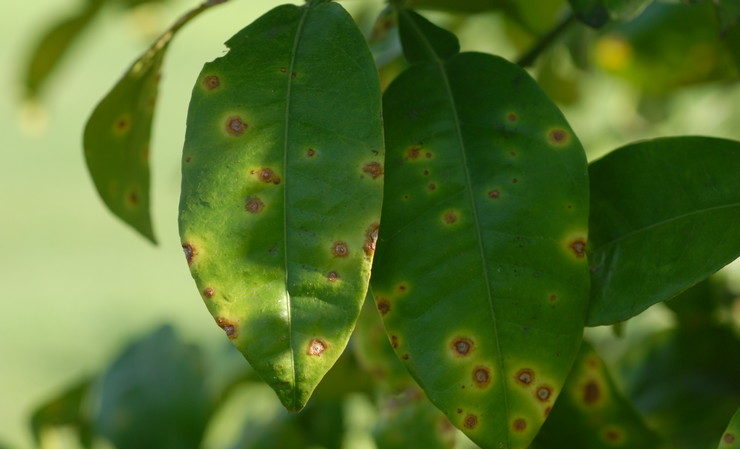
At home illness and pests attack lemon much less often than in the garden. However, some problems may occur even if the tree is growing in a pot:
- Spider mite. It is found by the cobwebs on the back of the leaves. Small, usually red, insects can also be seen.
- Aphid. Whole colonies of the pest stick around the leaves and young shoots of the plant, so it's easy to spot them.
- Thrips. Small black or transparent insects. If you blow into the pot, you will notice their movement.
- Fungal diseases. Most often, lemon at home is affected by black fungus and anthracnose.
To get rid of pests, the tree is washed under the shower, then treated with insecticides or folk remedies (soapy water). To combat fungal diseases, fungicides or folk remedies with an antifungal effect (for example, a solution of milk with iodine) are used.
Conclusion
Lemon bloom depends on the growing conditions. For the appearance of inflorescences, it is important that the room is light and warm. Feeding, transplanting and shaping are of no less importance. If the rules of any of these procedures are violated, citrus will not bloom.
Lemon is an unpretentious plant that is truly capable of growing even with minimal human intervention. However, in this case, flowers and fruits should not be expected. In order for a tree to develop correctly, to please with its beauty and fragrant fruits, it needs constant attention from a citrus grower.